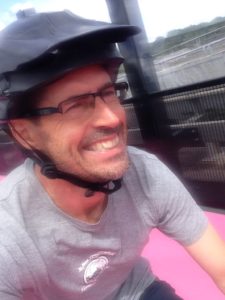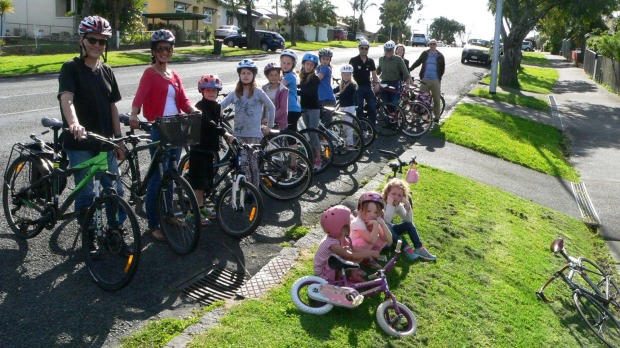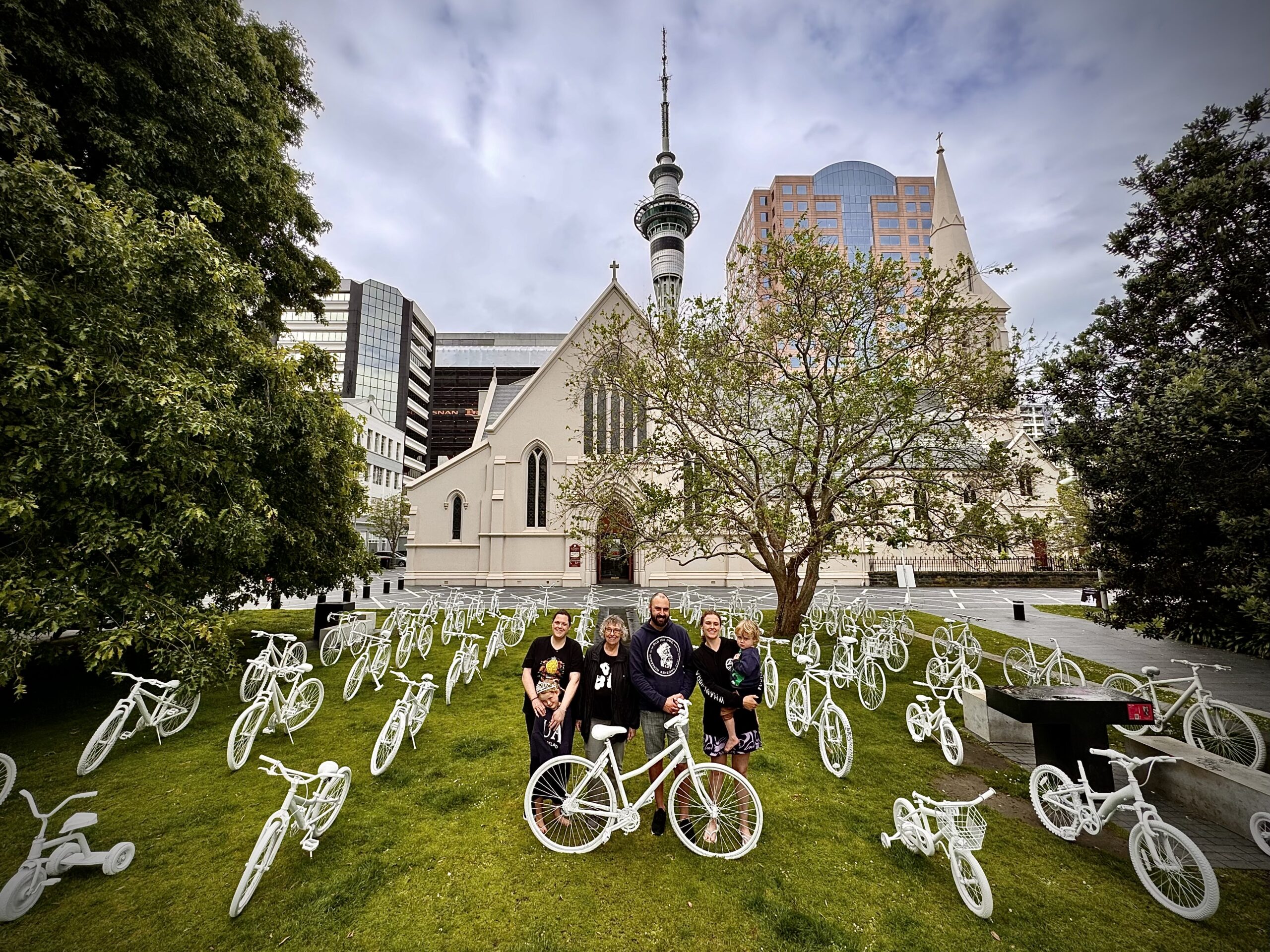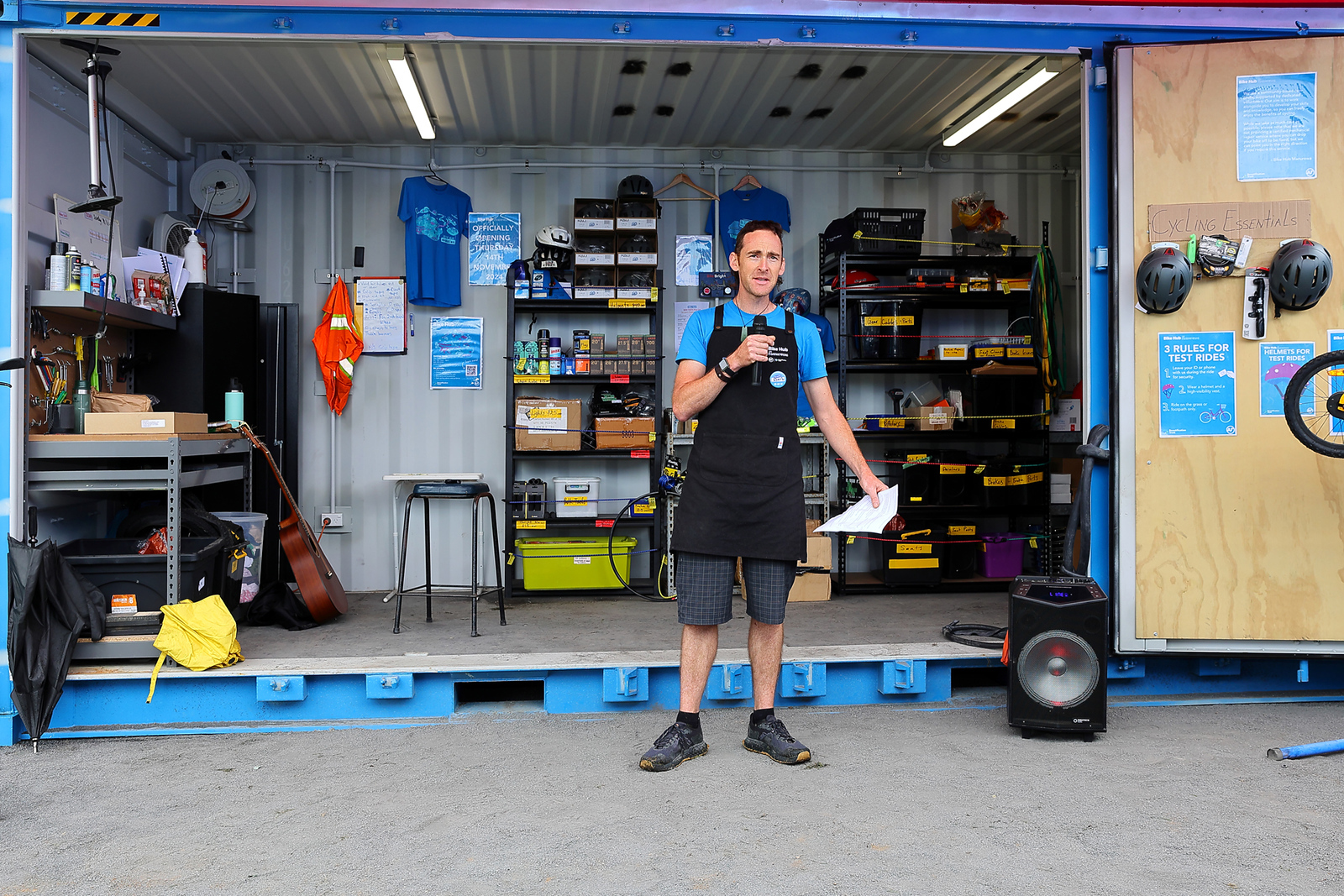
When new bike lanes come to town – like the current Inner West Safe Routes proposal – we like to dig deep into the infrastructure implications. And we nudge you to support the proposals in principle, as a path to a better, more bikeable city.
But to truly understand how transformative a proposal is, there’s nothing like hearing firsthand from the people whose lives it will change.
Bike Auckland member (and co-inventor of Friding) Greg Wood lives in Westmere with his young family. His Facebook post this morning sums it up better than we could, so we’re sharing it here unedited… in the hope it will inspire you to add your support before midnight tonight!
My heart is on my sleeve here, but it’s a sleeve backed up by data and experience. My family is wildly positive about this initiative, and extremely grateful to see it being implemented – for several reasons.
1. STREETS ARE FOR PEOPLE. Driving and parking of cars is one element of street interaction, but should not be allowed to be the only priority.
2. FEWER CARS, SAFER STREETS AROUND SCHOOLS AND SPORTS. We live on Warwick Ave [just around the corner from Westmere Primary School] and suffer from an enormous number of cars moving children to and from school each morning and afternoon. The more opportunity there is for parents to choose a safe, active mode for their kids’ travel to school, the better for us all. Our family is also one of many, many others who travel short distances by car – to ballet in Pt Chev, cubs in Grey Lynn, soccer on Meola Road – and would do so more on our bikes once given the chance to do so safely.
Kids' end of year dance show. Warm summer's day. 200 cars. Three bikes. Sometimes I despair. pic.twitter.com/kiZ1oVv13p
— Greg Wood (@gredge) December 12, 2015
3. BETTER OUTCOMES FOR LOCAL BUSINESSES. The effects of quality-built local cycling lanes on local businesses (dairies, cafés, other retail) is well documented, and positive. We’d love to ride down to Catroux on a weekend – which we currently never do. I’d love to ask my 10 year old to pop down to Westmere Butchers or around to Harvest Wholefoods to pick something up for lunch, but we drive to the supermarket instead.
Is it still #Quaxing if the goods being Quaxed won't stop singing? pic.twitter.com/4S9GJg4gDq
— Greg Wood (@gredge) December 17, 2015
4. SAFER STREETS FOR ALL. We know from data – New York, especially, but also LA, London, the Netherlands, Paris and more – that when a properly separated cycle lane is installed, traffic is not impeded (and often flows better because slower cars travel closer together) – yet the roads are measurably safer for everyone involved.
5. HEALTHIER PEOPLE. Children who get to school through active modes learn better. People who move around under their own power are generally fitter, healthier – and suffer less from depressive illnesses.
Data supports all of the above, and so does my family of five.
Thanks!
Greg, Vanessa, Ruby, Gabriel and Sophia.
SUBMISSIONS CLOSE MIDNIGHT FRIDAY 21 OCTOBER. CLICK HERE to make a one-minute quick submission to help Ruby, Gabriel, and Sophia and their friends ride to school, ballet, cubs, soccer, and the shops! We’re sure Greg and family will do the same when bike lanes come to your part of town 🙂
Being able to go #Friding, without fear, with your kids. And theirs, one day. Make your submission @GenerationZer0 pic.twitter.com/5bcXsHwUE3
— Greg Wood (@gredge) October 20, 2016




